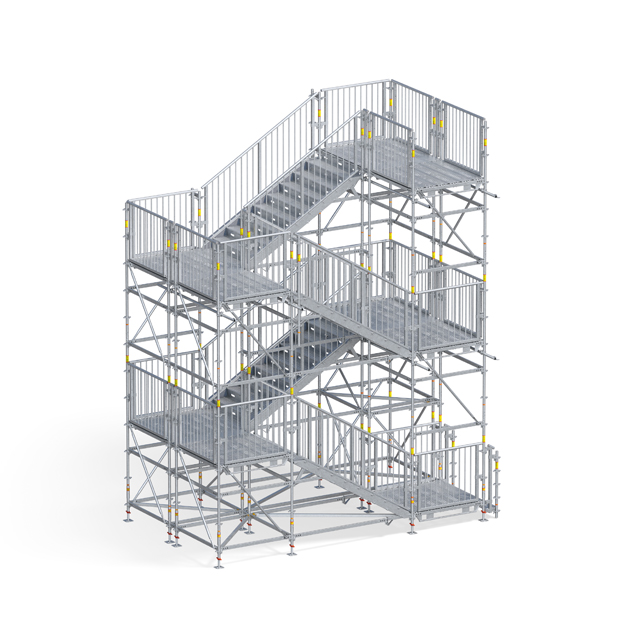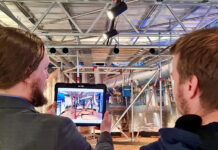
PERI has officially launched its new PERI UP Public Stairs system in the UK, designed to provide a smart solution for secondary access during building remediation works and public access at infrastructure sites.
Built on the PERI UP scaffolding logic, the system uses seven new components alongside the existing PERI UP Flex kit, which the manufacturer said keeps assembly ‘simple and familiar’ for contractors. Certified to SG4 and relevant UK and European standards, the staircases support loads up to 7.5 kN/m2, making them suitable for large-scale pedestrian flows.
On construction sites, PERI explained the system allows contractors to create safe secondary access routes around ongoing work, critical for projects in multi-storey and multi-occupancy buildings where normal entry points might be temporarily obstructed. In infrastructure works, Public Stairs can be used to ensure pedestrians can still pass through or around the site without disruption to their journey or to construction activities. In the event sector, the system is tipped to benefit sports tournaments, music festivals, and public exhibitions by offering a ‘sturdy’ route for visitors through complex sites. The wide treads, handrails, and slip-resistant surfaces are all said to contribute to a ‘comfortable and secure’ experience, even at peak times.

The PERI UP Public Stairs system recently made its UK exhibition debut at ScaffEx 25. “Today’s projects – whether infrastructure or events – demand flexible solutions that can adapt quickly without compromising safety,” said Matthew Binder, national product manager at PERI UK. “With PERI UP Public Stairs, we’re offering our customers a way to deliver safe public access faster, easier and with full confidence in compliance.”
PERI added that the intuitive assembly design – featuring the firm’s gravity locks and integrated height adjustment – means less downtime on site, lower labour requirements, and faster project handovers.









